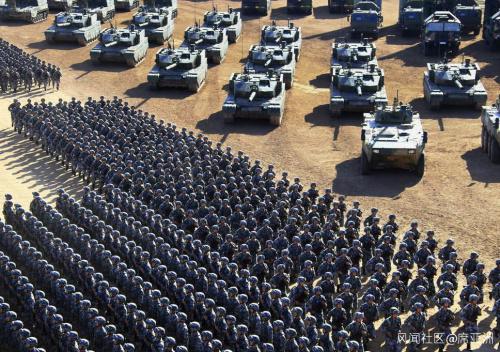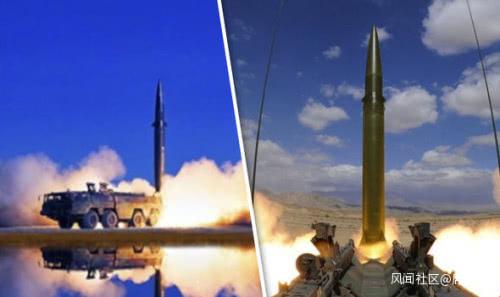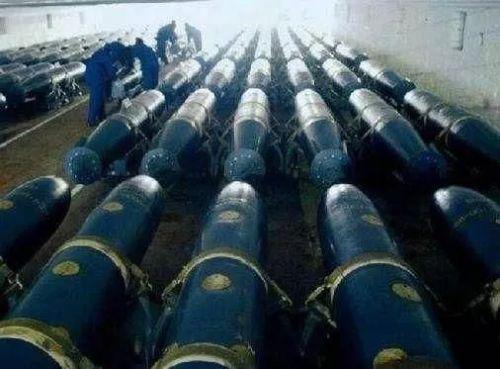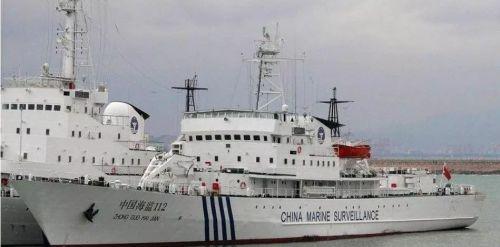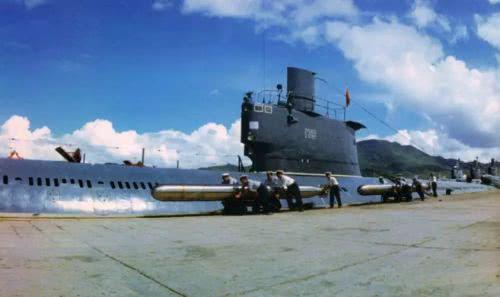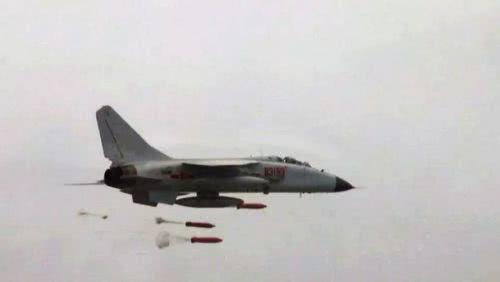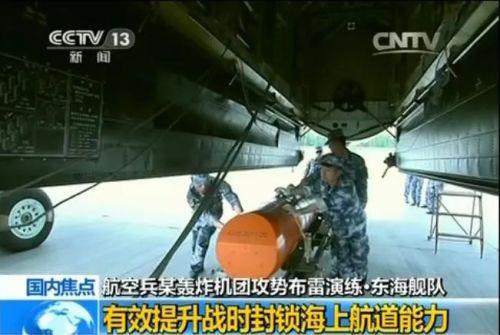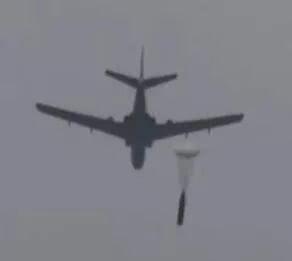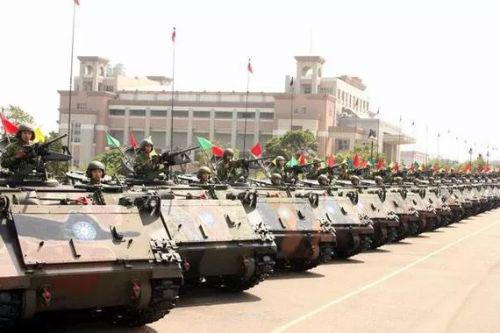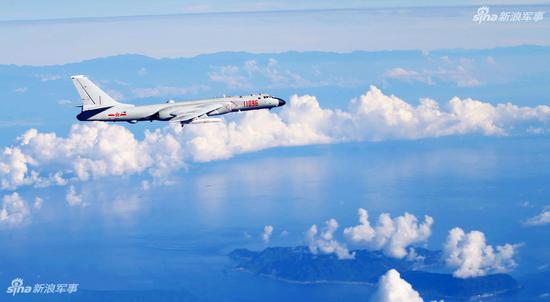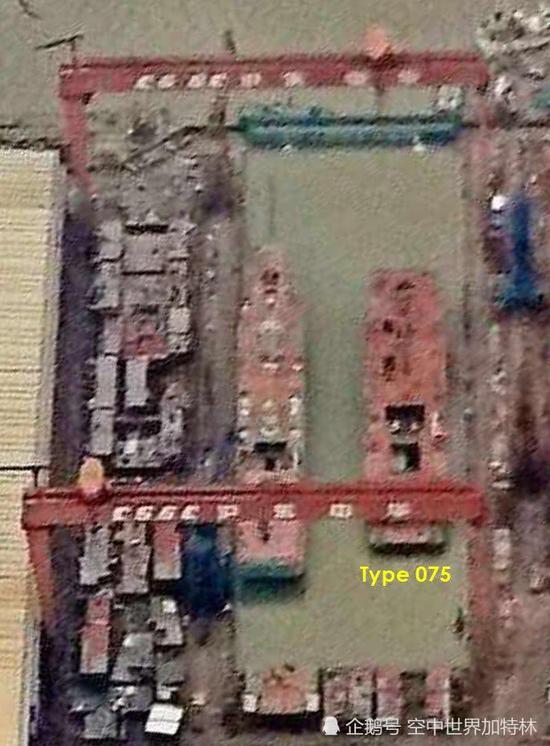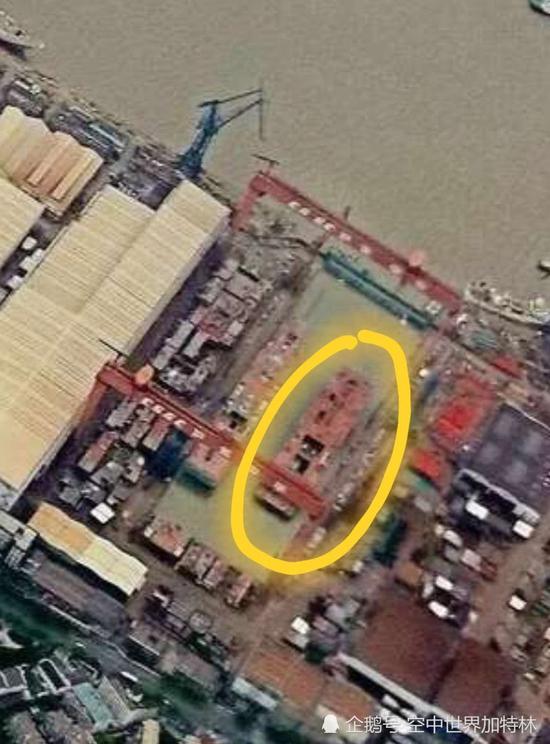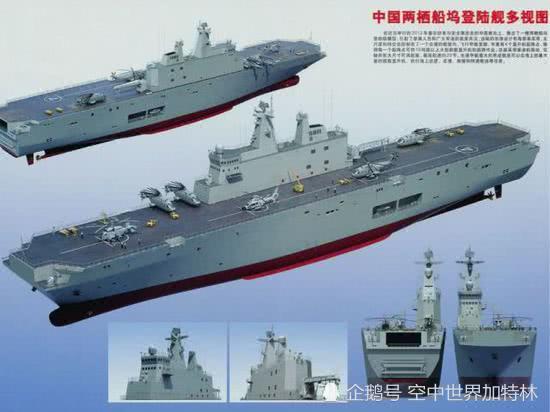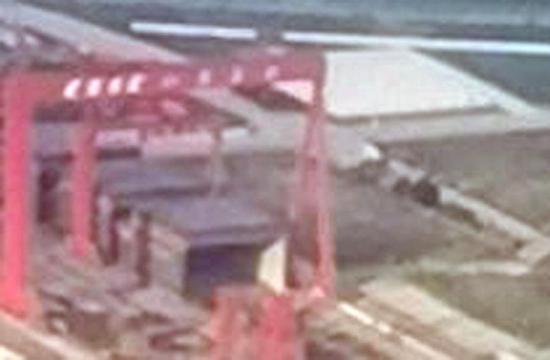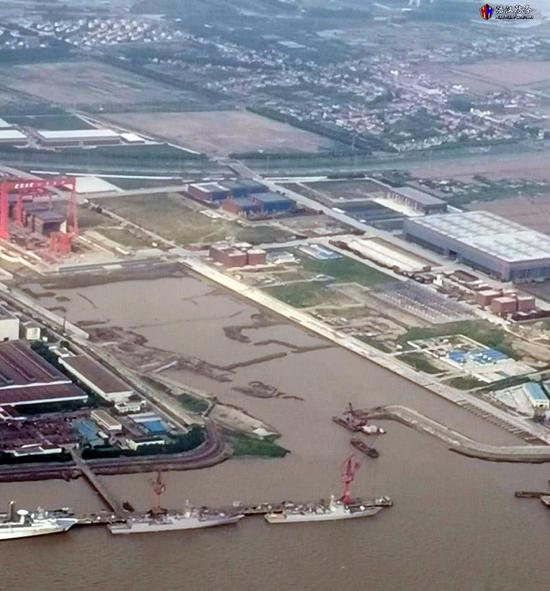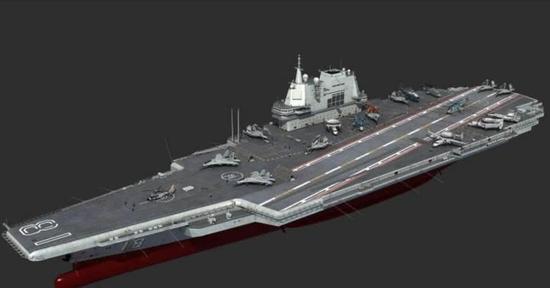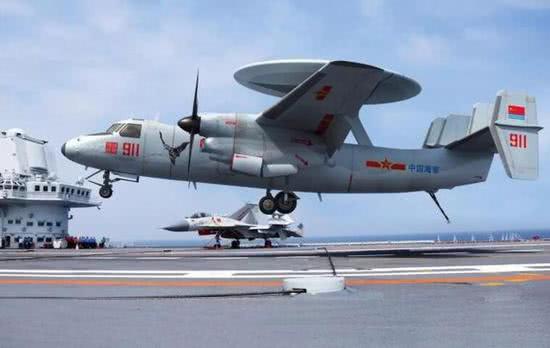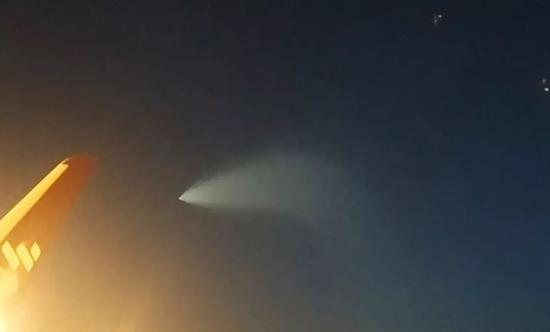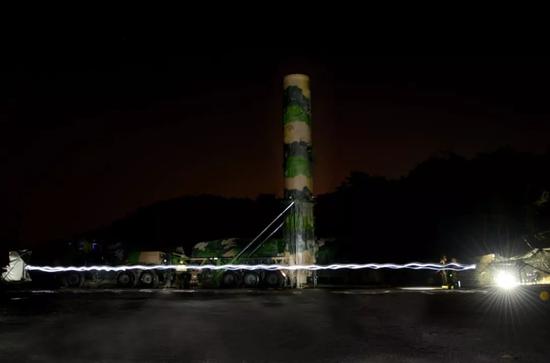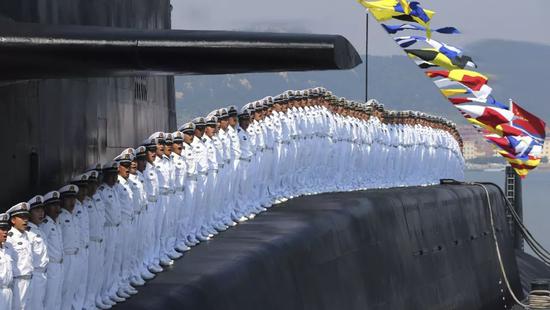- Joined
- Nov 29, 2016
- Messages
- 5,674
- Points
- 63
http://www.sohu.com/a/319918399_120091711?spm=smpc.home.mil-news.3.1560311663227oGyoGnA

军事洞察者
1023文章 1亿总阅读
查看TA的文章>
115
关键时刻!辽宁舰现身宫古海峡,局势瞬间逆转,里根号灰溜溜离开
2019-06-12 00:01
根据日本共同社6月11号的最新报道称,就在当天PLAN的辽宁号航母战斗群通过了宫古海峡,这是辽宁号航空母舰,自从2016年以来第一次通过第一岛链。东方大国在如此关键的时刻做出这样的举动无疑释放了明确信号,要知道谈判桌上的外交辞令最终都来源于国家实力。国家实力又分两个方面,第一是经济实力,其次便是至关重要的军事实力。在东方大国与美国的贸易纠纷如火如荼的情况之下,辽宁号航母战斗群通过宫古海峡进入太平洋的举动无疑是想告诉美国人,东方大国不仅仅在经济实力上能够与美国人一决高下,在军事实力上,美国也休想在西太平洋地区占到我们任何的便宜。
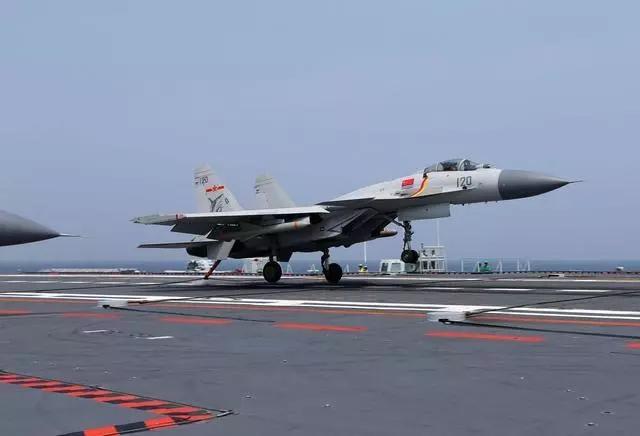
值得一提的是,此次辽宁号航母战斗群前出宫古海峡进入太平洋的举动,同样是对美军近些年来在亚太地区频繁秀肌肉的最好回应。前不久美国海军第七舰队的里根号核动力航空母舰从其驻地横须贺港离开,进入太平洋与澳大利亚印度以及日本三国海军举行联合演习。除此之外在我南部海域,美军的动作也是十分频繁。前几天在我东部海域更是发生了俄罗斯军舰,差点与美国军舰在海上碰撞的危险事件。如果此时我们不站出来表明自己的态度的话,美国在亚太地区未来类似的秀肌肉举动无疑会更加嚣张,到那时候就永无宁日了。

事实证明美国人纸老虎的本质从几十年前到现在一直没有改变过,里根号核动力航空母舰此前一直在宫古海峡地区游弋徘徊,由于缺少护航的驱逐舰护卫舰,因此辽宁号航母战斗群在通过宫古海峡之前,里根号航母就已经灰溜溜离开了。对此有俄罗斯军事专家分析称,此次里根号面对辽宁号离开很可能就是未来亚太地区局势逆转的缩影。如今的PLAN正在像下饺子,一般入列新型的水面作战舰艇和潜艇,未来美国海军很有可能无力面对PLAN的强烈冲击。
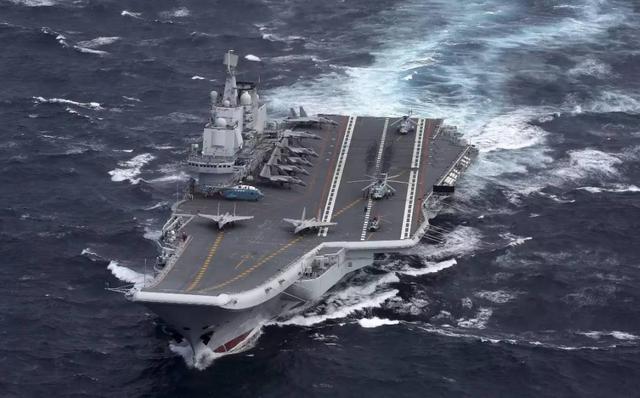
值得一提的是辽宁舰此次的目标,应该是检验舰体升级改造后的战斗力。同时磨练航母编队,以及恢复歼15战机起降。毕竟在船厂升级大半年了都没有出海,此次出海应该是重新恢复生成战斗力。返回搜狐,查看更多
VIDEO click here!
http://www.sohu.com/a/319947726_357283?spm=smpc.home.mil-news.1.1560311663227oGyoGnA

侠客岛
1635文章 16亿总阅读
查看TA的文章>
95
【解局】中国航母编队再出第一岛链!别急,会成常态的
2019-06-11 22:39
辽宁舰战斗群穿越宫古海峡入太平洋 三年来首次!
日本NHK电视台今天报道,日本防卫省发现,中国海军航母辽宁舰在当地时间11日早晨穿过“宫古海峡”,由东海进入太平洋,随行的还有补给舰等其他军舰。
日本防卫省高度紧张,立刻出动海上自卫队的山雾号、海雾号、松雪号三艘驱逐舰跟踪监视,称这是自2016年12月以来,中国航母第二次通过该海域。
“宫古海峡”在哪呢?如下图所示,它位于冲绳本岛与宫古岛之间。

其实仔细看看上图,我们多少也能理解日方为什么有些紧张,毕竟中方再次突破了所谓的“第一岛链”。
不过岛叔想说的是,这不是什么大事,中国的舰船、战机已经很多次穿过“宫古”了,对于航母也不是第一次。
日本不必大惊小怪,以后中国航母出“宫古”将是常态。
转型
近年来,随着海军建设的进步,中国海军逐渐由“黄水海军”(近海)向“蓝水海军”(远海)转型。2009年3月,中国海军舰艇第一次穿越宫古海峡进入西太平洋进行远海训练。
有人可能会问,宫古岛和冲绳本岛如今都是属于日本的领土,穿越中间的海域不侵犯日本的主权吗?
答案是否定的。这是因为,宫古海峡是中国海通往西太平洋诸海峡中,最宽的海峡。其宽度约300公里(150海里),是台湾海峡的两倍。
而根据《联合国海洋法》,一个国家的领海是12海里,专属经济区再延伸200海里。在专属经济区内,沿海国对其自然资源享有主权权利,而其他国家享有“航行、飞越自由”。
因此,从宫古海峡的中间穿过的话,必然经过的是日本的专属经济区。并且,在国际海域进行远海训练是世界各国海军的通行做法,符合国际法和国际惯例。
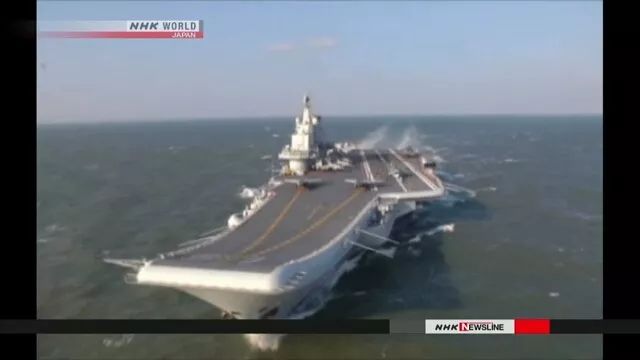
展开全文
声明:该文观点仅代表作者本人,搜狐号系信息发布平台,搜狐仅提供信息存储空间服务。
宫古海峡 冲绳本岛 宫古岛 联合国海洋法 辽宁舰编队
http://www.sohu.com/a/319999237_162522?spm=smpc.home.top-news2.1.1560311663227oGyoGnA

环球网
62万文章 279亿总阅读
查看TA的文章>
96
国台办:祖国必须统一,也必然统一
2019-06-12 10:41
【环球网报道 记者 张丽媛】日前国务委员兼国防部长魏凤和在香格里拉对话会上表示,如果有人胆敢把台湾从中国分裂出去,中国军队必将不惜一战、必将不惜一切代价坚决维护祖国统一。在今天(12日)举行国台办例行新闻发布会上,有记者对此提问称,这是否意味着大陆已经做好“武统”的准备?
发言人安峰山表示,国务委员兼国防部长魏凤和上将在香格里拉对话会上的讲话明确表达了我们坚决维护祖国统一的立场。祖国必须统一,也必然统一,这是七十载两岸关系发展历程的一个历史定论,也是新时代中华民族伟大复兴的必然要求。两岸同胞是血脉相连的骨肉兄弟和命运共同体,我们愿意尽最大的努力,以最大的诚意来追求争取和平统一的前景,同时我们捍卫国家主权和领土完整的决心和意志也是坚定不移的,绝不容忍“台独”分裂势力分裂国家。我们保留采取一切必要措施的选项,针对的是外部势力的干涉和极少数“台独”分裂势力的分裂活动,绝不是针对台湾同胞。返回搜狐,查看更多
https://mil.news.sina.com.cn/china/2019-06-12/doc-ihvhiews8272485.shtml
辽宁舰编队出岛链之际 美军里根号航母在南海巡航
辽宁舰编队出岛链之际 美军里根号航母在南海巡航
19
(观察者网讯)“辽宁”号航母战斗群昨日穿越宫古海峡前出西太平洋训练,日本自卫队依照惯例,派遣舰机对我海军航母战斗群进行识别监视。
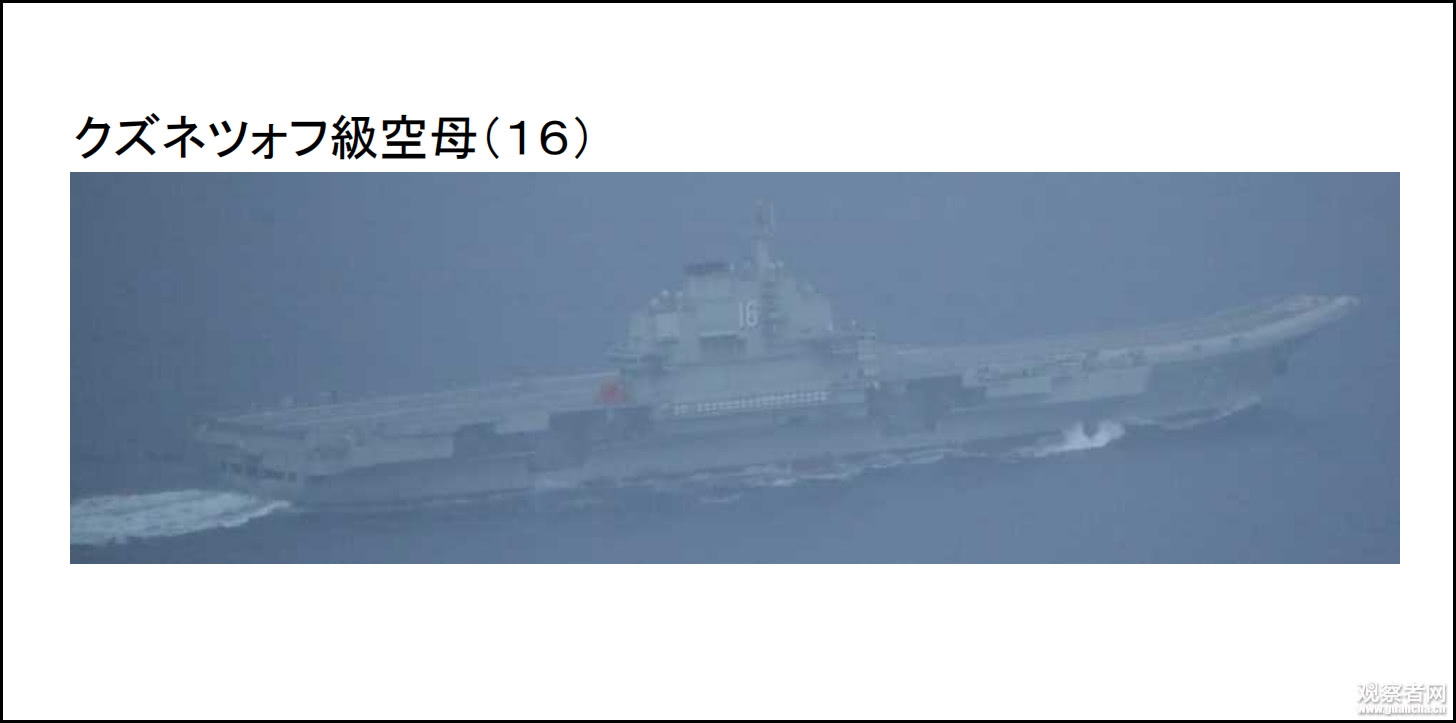
日本防卫省统合幕僚监部6月10日下午发布消息,当地时间6月10日早7时,日本海上自卫队吴港第12护卫群所属的“朝雾”级驱逐舰“海雾”号(JDS Umigiri,DD-158)和舞鹤港第14护卫群所属的“朝雾”级驱逐舰“山雾”号(JDS Yamagiri,DD-152),在久米岛北西270公里的海域。发现了正在向东南方向航行的051C型驱逐舰“石家庄”号(日本称“旅州”级)和901型高速战斗支援舰“呼伦湖”号(“福峪”级)。
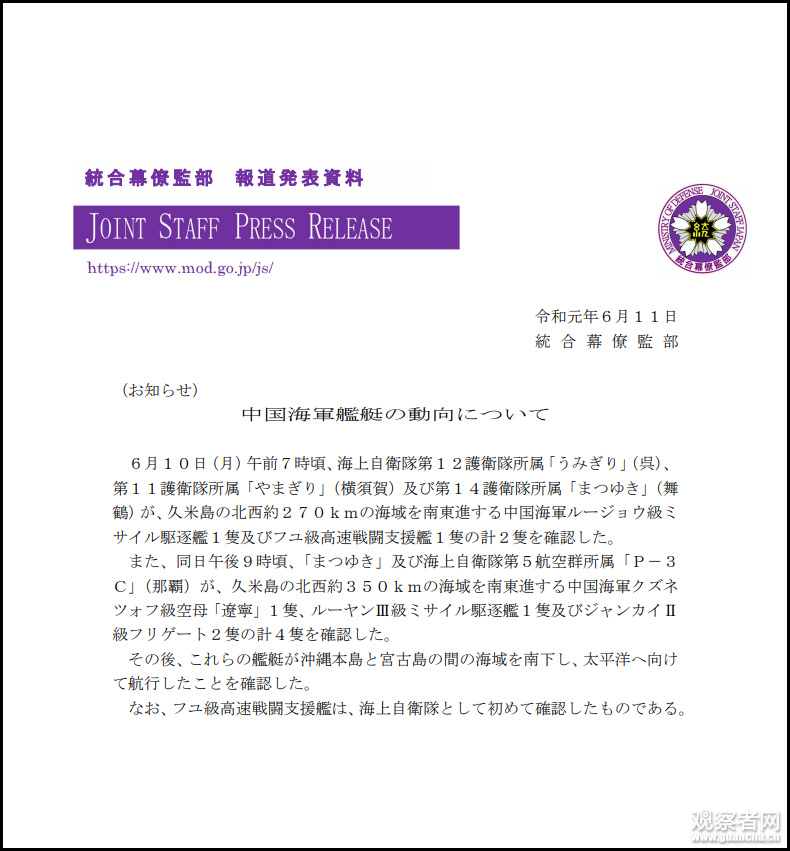
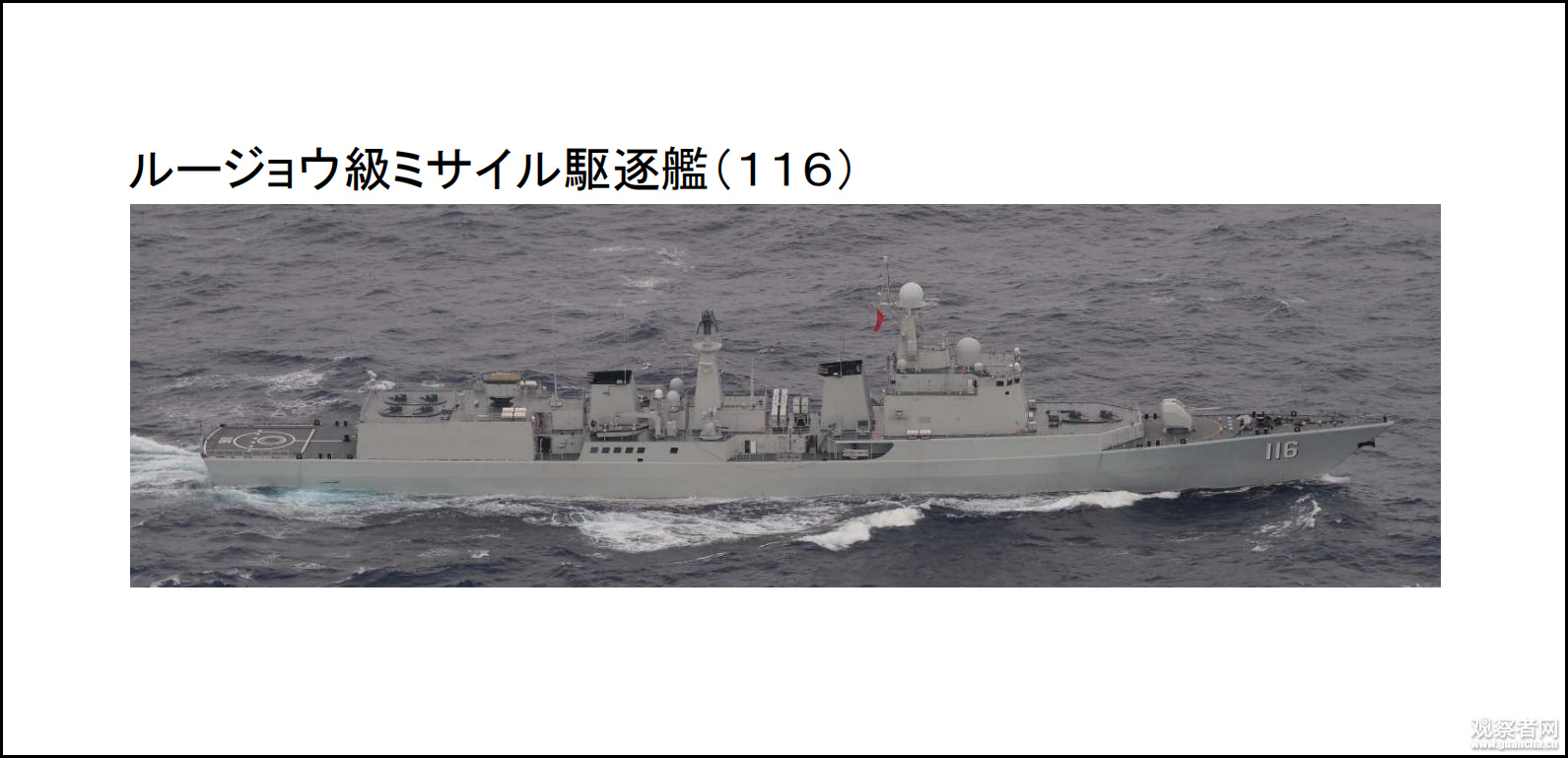
除了石家庄号以外,日本海上自卫队还确认了“辽宁”号航空母舰,054A型导弹护卫舰“大庆”号,“日照”号,052D型驱逐舰“西宁”号。随后海自派出P-3C海上巡逻机,确认了中国海军编队通过的冲绳主岛和宫古岛之间的水道,前往太平洋。日本海自称,这也是日本海上自卫队首次拍摄到901型高速战斗支援舰。
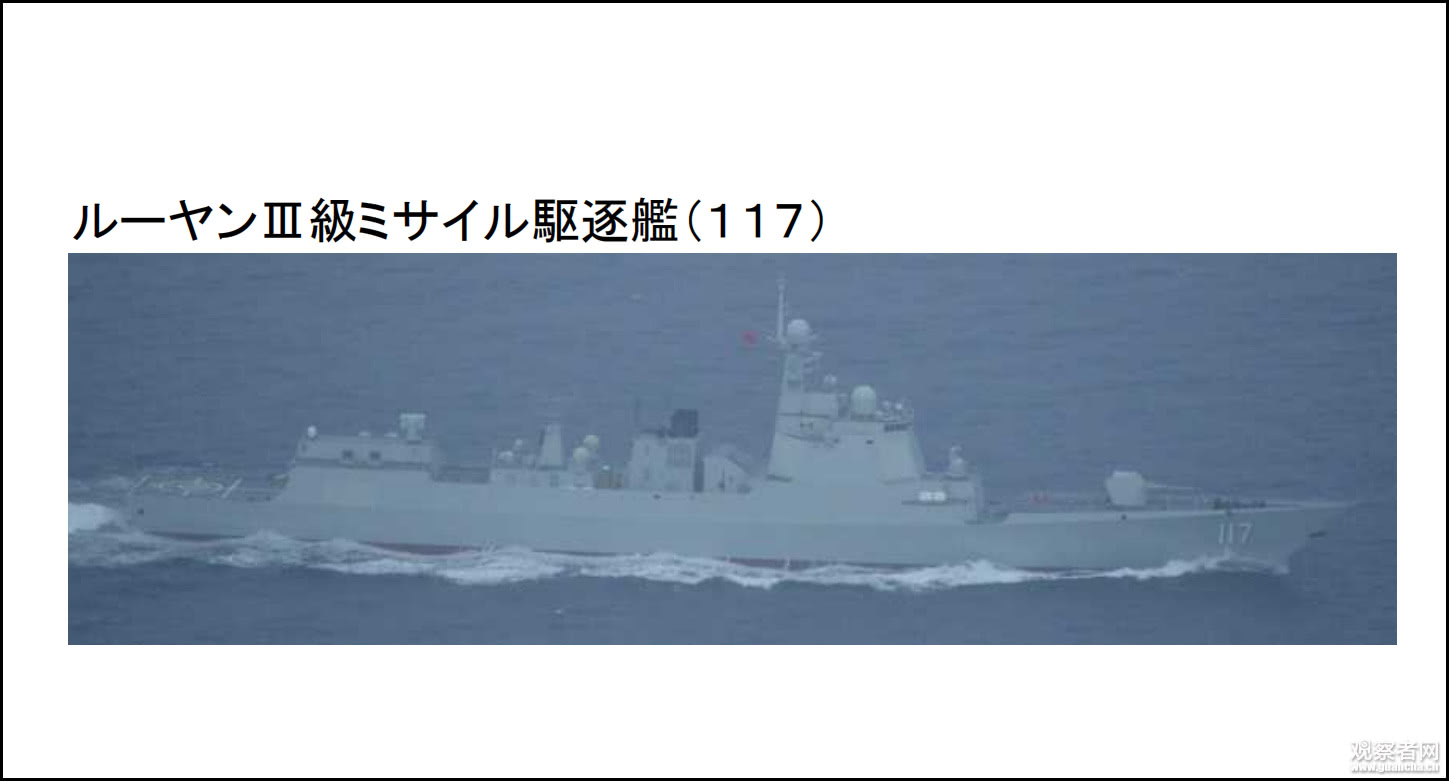
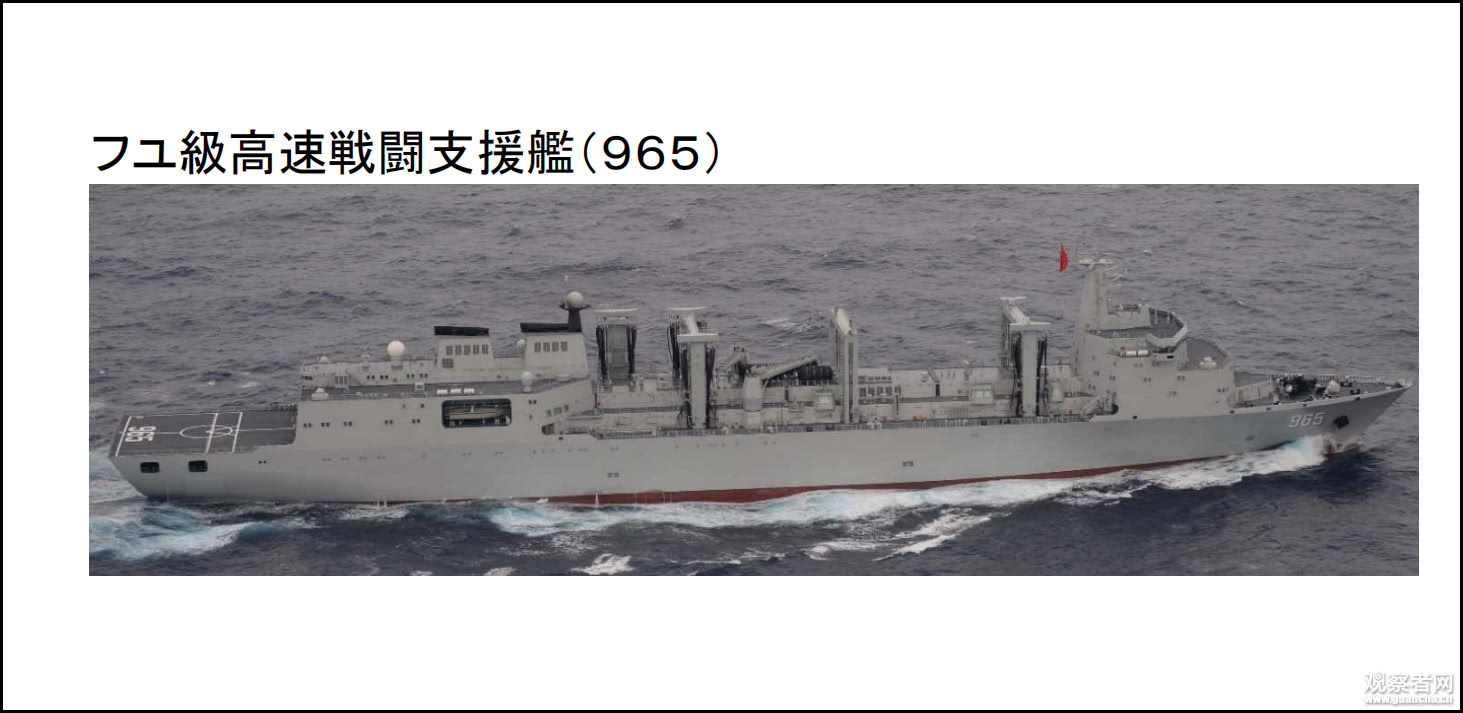
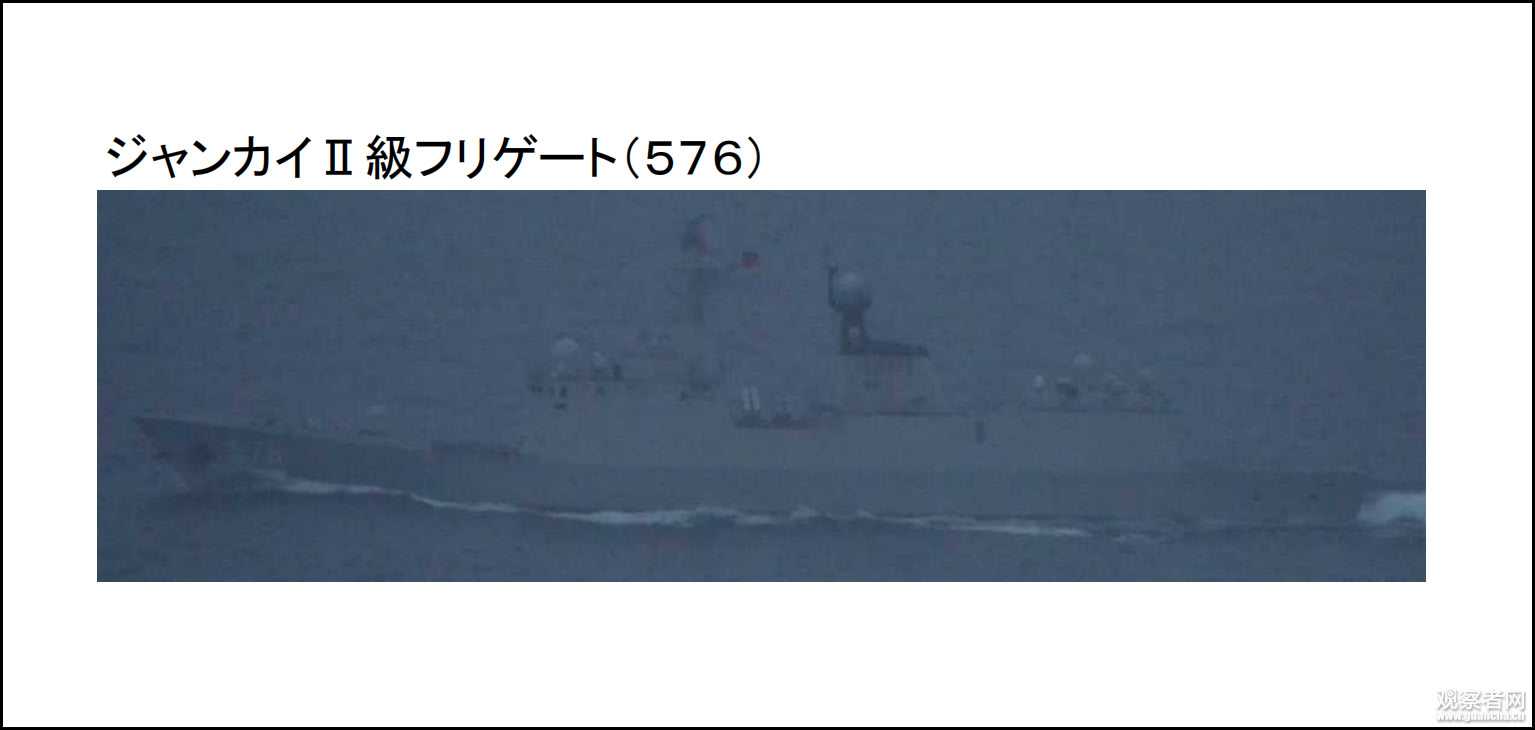
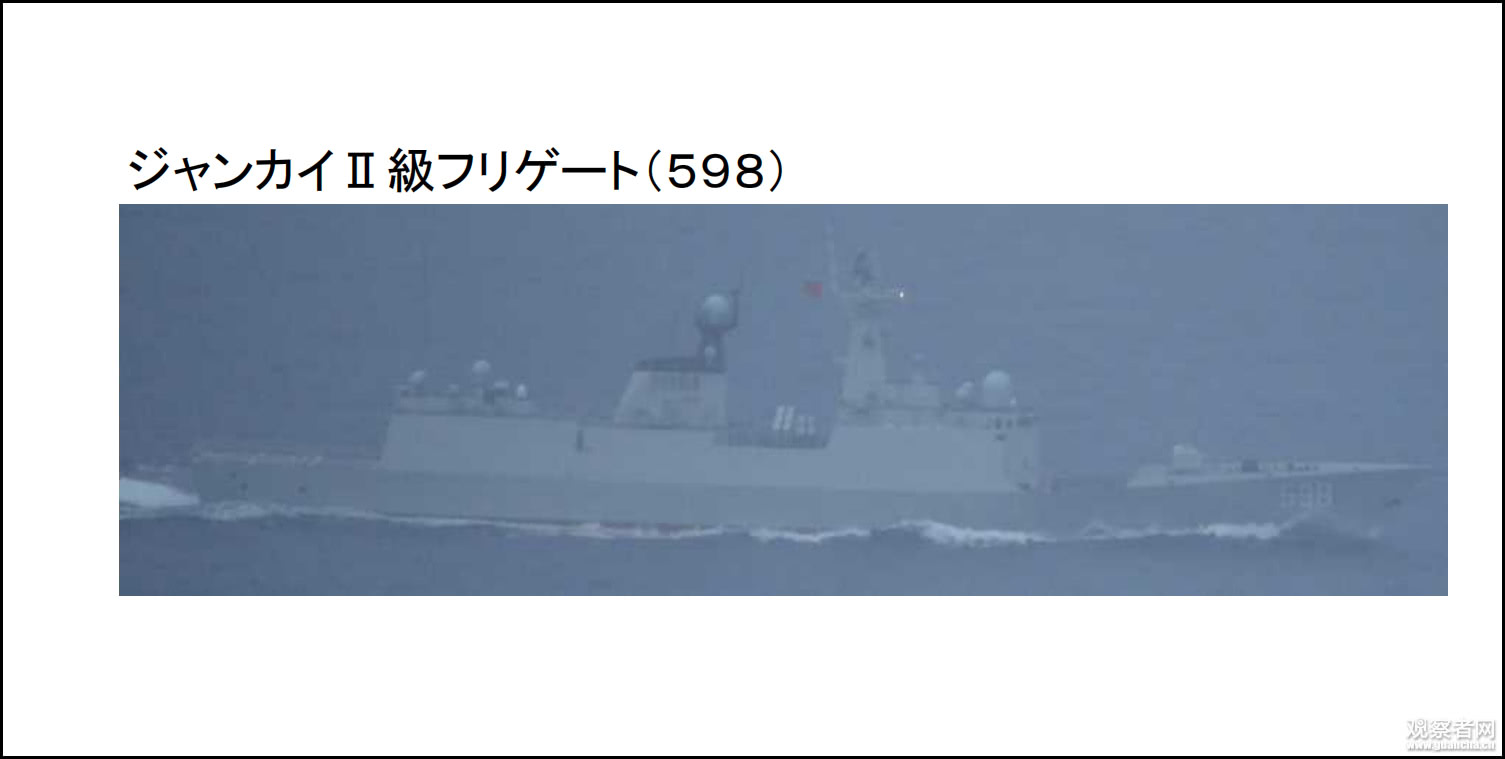
据日经中文网此前报道,2016年12月,以中国首艘航母“辽宁”为核心的舰队日本时间25日上午10点左右通过位于冲绳本岛和宫古岛之间的宫古海峡进入西太平洋。这是首次确认中国航母通过该海峡。
辽宁号目前是日本附近唯一一艘航母。驻扎在横须贺的“里根”号,几天前前往南海地区进行例行巡航。
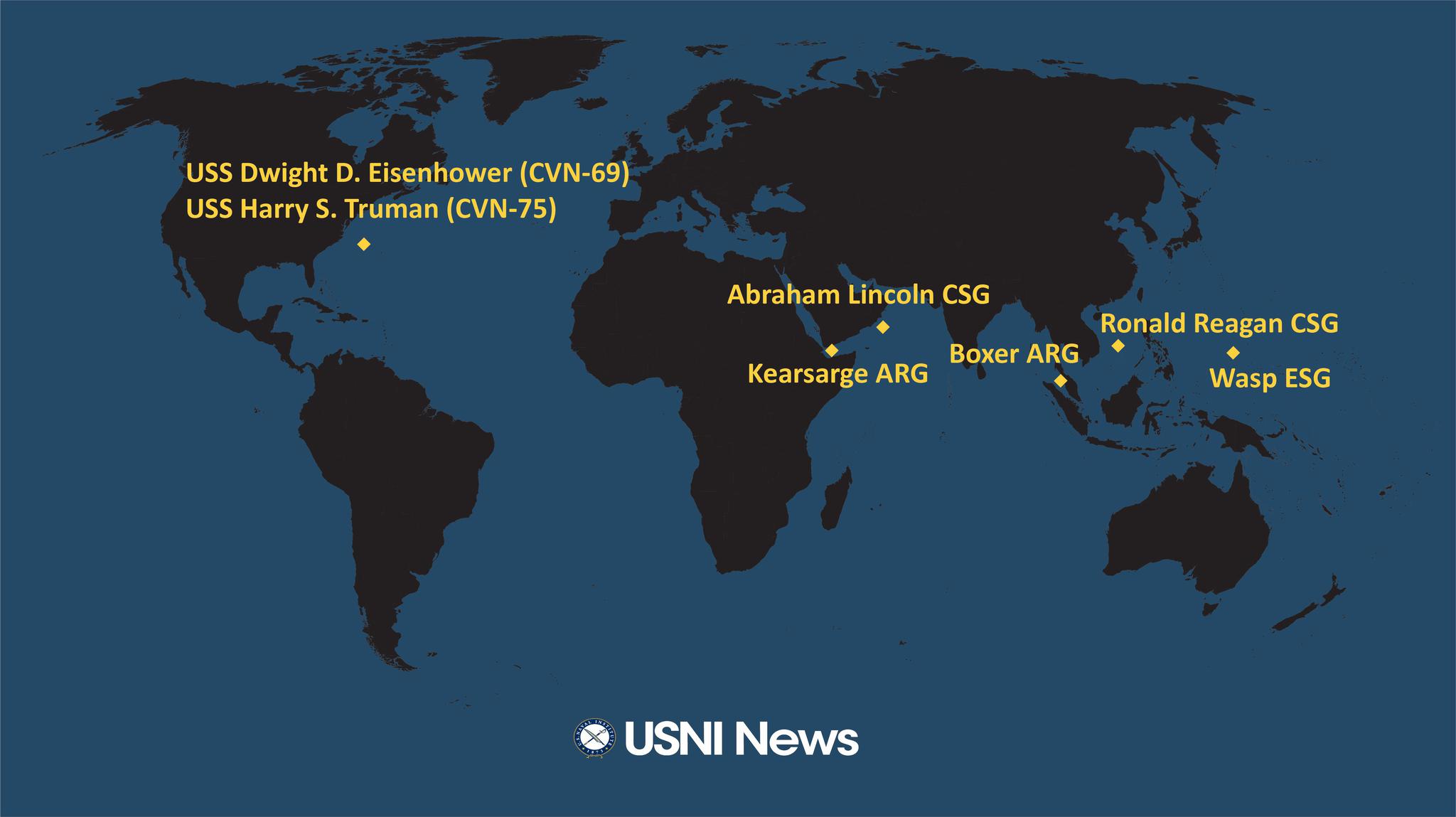
https://mil.news.sina.com.cn/china/2019-06-12/doc-ihvhiews8238145.shtml
中国航母编队再出第一岛链 日本别急这会成常态
中国航母编队再出第一岛链 日本别急这会成常态
150
原标题:[解局]中国航母编队再出第一岛链!别急,会成常态的
日本NHK电视台今天报道,日本防卫省发现,中国海军航母辽宁舰在当地时间11日早晨穿过“宫古海峡”,由东海进入太平洋,随行的还有补给舰等其他军舰。
日本防卫省高度紧张,立刻出动海上自卫队的山雾号、海雾号、松雪号三艘驱逐舰跟踪监视,称这是自2016年12月以来,中国航母第二次通过该海域。
“宫古海峡”在哪呢?如下图所示,它位于冲绳本岛与宫古岛之间。
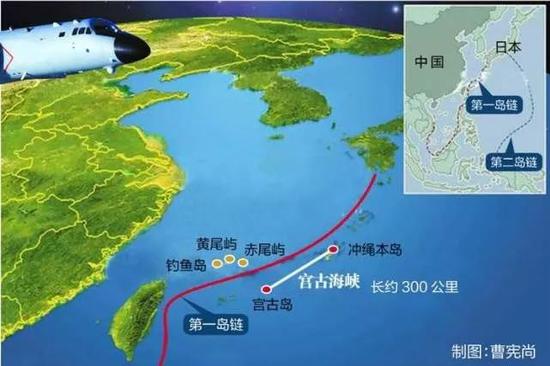
其实仔细看看上图,我们多少也能理解日方为什么有些紧张,毕竟中方再次突破了所谓的“第一岛链”。
不过岛叔想说的是,这不是什么大事,中国的舰船、战机已经很多次穿过“宫古”了,对于航母也不是第一次。
日本不必大惊小怪,以后中国航母出“宫古”将是常态。
转型
近年来,随着海军建设的进步,中国海军逐渐由“黄水海军”(近海)向“蓝水海军”(远海)转型。2009年3月,中国海军舰艇第一次穿越宫古海峡进入西太平洋进行远海训练。
有人可能会问,宫古岛和冲绳本岛如今都是属于日本的领土,穿越中间的海域不侵犯日本的主权吗?
答案是否定的。这是因为,宫古海峡是中国海通往西太平洋诸海峡中,最宽的海峡。其宽度约300公里(150海里),是台湾海峡的两倍。
而根据《联合国海洋法》,一个国家的领海是12海里,专属经济区再延伸200海里。在专属经济区内,沿海国对其自然资源享有主权权利,而其他国家享有“航行、飞越自由”。
因此,从宫古海峡的中间穿过的话,必然经过的是日本的专属经济区。并且,在国际海域进行远海训练是世界各国海军的通行做法,符合国际法和国际惯例。
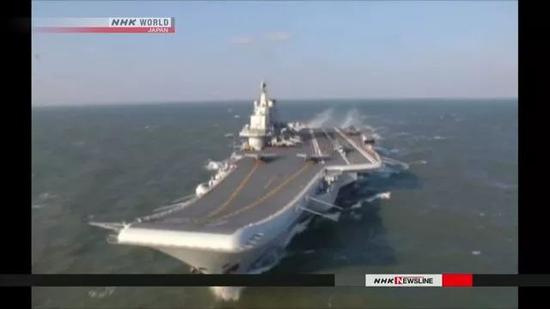 日本NHK今日播放的画面
日本NHK今日播放的画面
2013年9月,中国空军的2架H-6K“战神”轰炸机飞越宫古海峡。中国空军的作战飞机首次经过此海域,引起了日本的强烈反应,航空自卫队的F-15紧急起飞作为应对。
从那以后,中国海军和空军穿过宫古海峡的越来越多,编队规模也越来越大。直到2016年12月,辽宁舰编队越过海峡,引起日本强烈震动。
其实,每次中国有舰艇、战机穿过该海峡时,日本都会派出舰艇、飞机进行全程监控,拍摄照片,然后再散发给日本媒体,进行一番炒作。
日本航空自卫队每次拍摄的照片里,中国战机清晰又漂亮,比如苏30、歼20等,让中国军迷们大饱眼福,所以军迷们亲切地称他们为中国空军的“御用摄影师”。
除了跟踪、偷拍,对于中国军方的正当合法行为,日本有时还进行外交“抗议”。例如在2012年10 月16日,中国海军舰船编队通过宫古海峡时,日本政府猜测这是中国向日本发出的“挑衅”,就向中方提出了“交涉”。
对此,中国国防部发言人吴谦在2017年3月有过一个经典的回答:
日方总是喜欢炒作中国军队正当合法的训练活动,依我看这主要是心态还没有调整好,也许是以往中国军舰过宫古海峡过得少了,那么今后我们多过几次,日方习惯了,也就好了。
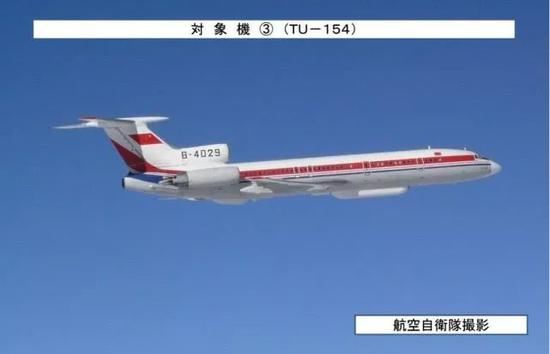
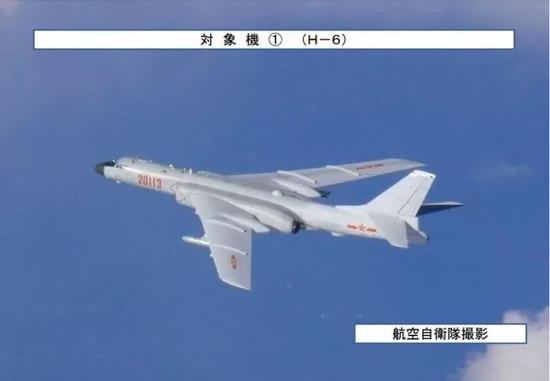 日本航空自卫队曾拍摄的照片
日本航空自卫队曾拍摄的照片
突破
上一次,关于辽宁号的消息,还是在4月份于青岛举行的海上阅舰式。当时,“辽宁”号航空母舰和“西宁”号驱逐舰同时出现,二者是构成航母编队不可或缺的核心舰种。
航母编队执行海上作战的重要任务就是夺取制海权——确保我方自由使用海洋的能力。通过阅舰式,可以看出中国航母编队已经开始成形。
航母是远洋作战平台,不可能天天在家门口晃悠,中国航母注定需要冲出“第一岛链”,走向远洋。对于中国而言,航母的作用一是解决远程投送兵力的问题,遂行远洋威慑、作战和其他任务。
以前,中国由驱逐舰和护卫舰组成的远洋编队缺乏必要的后勤保障与情报支持,无海上区域制空权和必要的反潜能力,在远洋只能执行一些诸如反海盗、打击恐怖主义这样的非战争任务,难以形成有效战争能力。
而航母在远洋进行部署后,航母的各类舰载机能为海上编队提供一定的侦察预警和空中掩护,并可作为指挥平台充分整合编队其他力量。
航母的第二个作用是,对敌进行外线威慑。由于“第一岛链”距离中国大陆纵深基本都在200 海里以内,从现代战争的防御来看,这块有限海域的纵深显然不足,会限制中国军舰在海上作战的灵活自由度。
面临不利的地理环境和地缘政治条件,如果中国海军仅仅局限在“第一岛链”内的近海活动,通过在近海建立防线维护国家安全,那依然是陆军战略的继续,海军的作用和特点远远没有得到发挥。
因此,中国必须跳出陆战思维的窠臼,发挥海军的机动优势,在大洋纵深摧毁危险来源或威慑牵制对手,以求最终实现中国近海乃至沿海大陆的安全。
在中国能突破“第一岛链”封锁的几个出口中,宫古海峡凭借其宽度、深度,成为最重要的海上出口。因此日本对中国军队舰船、飞机通过宫古海峡,感到非常敏感和担忧,千方百计进行阻挠和破坏。
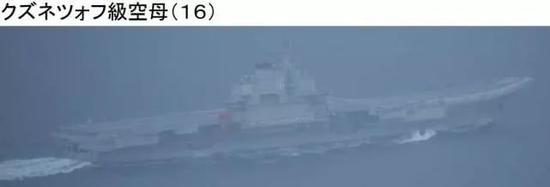
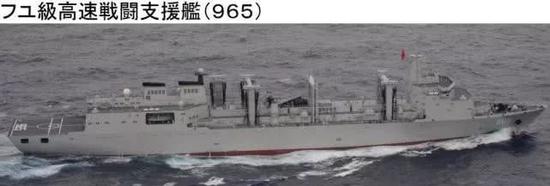
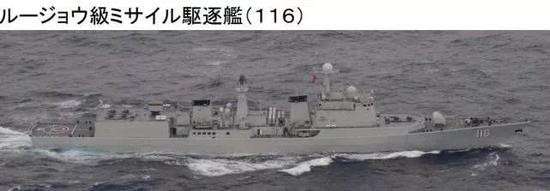 日本防卫省今日发布的照片
日本防卫省今日发布的照片
任务
至于周边经常炒作的“中国航母威胁”,则多少有些违背军事常识。解决与周边国家的海洋争议问题绝非中国航母今后的主要任务。
中国奉行和平解决争端的政策,而且即便中国决策者真有心使用武力或强制手段,来解决“台独”问题,或者与日本及部分东南亚国家的海洋争端,航母也非主要作战平台。
要知道,随着中国军事现代化的全面推进,中国政策选项已越来越多。当前,中国空军和海军航空兵装备的主战飞机是以歼10、歼11、苏27、苏30等组成的三代机群,以及歼20领衔的四代机群,作战半径都在1500公里左右甚至以上。
现在已不是短腿的歼6与歼7领衔的时代,无论是钓鱼岛,还是南沙群岛,均在中国陆基战斗机的有效半径之内。今后随着中国四代机和五代机的大量服役,在东海及南海维持优势制空权更不在话下。
导弹方面,中国对周边国家形成压倒性优势,中国岸基巡航导弹、近中程弹道导弹可以通过对特定海域的饱和攻击吓阻对手。
另外,在水面舰艇方面,已开始大批量生产的052D型驱逐舰和055型万吨级新型驱逐舰,具有强大的海上综合作战能力,特别是其区域防空系统被誉为中国版的“宙斯盾”。中国武器库拥有如此多的选择,何须劳烦航母?


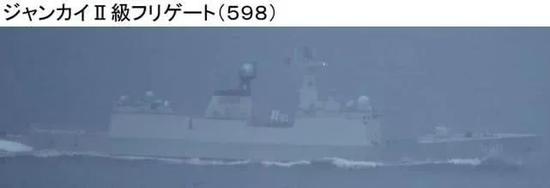 日本防卫省今日发布的另一组照片
日本防卫省今日发布的另一组照片
其实,近海作战非航母所长,用其解决海洋争端效价比过低。航母是远洋行动的主要平台和利器,而在东海、南海这样的近海,受制于空间的限制,航母的作战效能难以得到有效发挥。相对于中国和对手庞大的陆基战斗机群,航母搭载的几十架舰载机所能发挥的作用微乎其微。
另一方面,航母在近海作战的风险却很大。航母在东海、南海这样的濒陆海区,极易遭到岸基雷达、电子侦听站和侦察机等的监视和跟踪,也容易遭到陆基战斗机、巡航导弹、潜艇等反介入力量的打击。战时它在近海不仅发挥不了多大作用,反而很容易成为“人质”。
未来,中国航母将主要承担保护海上交通线、进行海军外交、遂行地区威慑和人道主义援助与灾害救援四大任务。
发展航母是中国远洋战略的一部分,是中国走向深蓝,承担国际责任,成为世界大国的基础。
随着中国航母计划的不断完善,中国航母必然会频繁地从包括宫古海峡在内的通道进出,前往西太平洋和印度洋进行训练及部署,这是一个大国的标配,根本用不着大惊小怪。
文/湖图燕波
点击进入专题:
中国航母辽宁舰穿越宫古海峡
http://www.sohu.com/a/319918399_120091711?spm=smpc.home.mil-news.3.1560311663227oGyoGnA
Military insight
1023 articles 100 million total reading
View TA's article >
115
share to
crucial moment! The Liaoning ship appeared in the Miyako Strait, and the situation reversed instantly. The Reagan dingy left.
2019-06-12 00:01
According to the latest report of the Kyodo News Agency on June 11, the GN's Liaoning carrier battle group passed the Miyako Strait, which is the aircraft carrier of Liaoning. It has passed the first island chain for the first time since 2016. The move by the great powers of the East at such a critical moment undoubtedly unleashed a clear signal that the diplomatic rhetoric at the negotiating table ultimately came from the strength of the country. The national strength is divided into two aspects. The first is economic strength, and the second is vital military strength. Under the circumstance of trade disputes between the great powers of the East and the United States, the move of the Liaoning carrier battle group into the Pacific Ocean through the Miyako Strait is undoubtedly to tell the Americans that the Eastern Powers can not only compete with the Americans in terms of economic strength. In terms of military strength, the United States also wants to take advantage of any of us in the Western Pacific.
It is worth mentioning that the move of the Liaoning carrier battle group into the Pacific Ocean before the Miyako Strait is also the best response to the US military's frequent muscle show in the Asia-Pacific region in recent years. Not long ago, the Reagan nuclear-powered aircraft carrier of the US Navy's Seventh Fleet left its port of Yokosuka, and entered the Pacific Ocean to hold joint exercises with the Australian, Indian and Japanese navies. In addition to this, in the southern seas, the movement of the US military is also very frequent. A few days ago, in my eastern seas, there was a dangerous incident in which Russian warships almost collided with US warships at sea. If we don't stand up and show our attitude at this time, the United States will undoubtedly be more arrogant in the future, and the United States will be more arrogant in the future.
It turns out that the nature of American paper tigers has not changed since decades. The Reagan nuclear-powered aircraft carrier has been in the Miyako Strait area. Due to the lack of escort destroyer frigates, the Liaoning carrier battle group is in the palace of passage. Before the ancient Strait, the Reagan aircraft carrier had already left. According to an analysis of Russian military experts, the Reagan’s departure from the Liaoning issue is likely to be the epitome of the reversal of the situation in the Asia-Pacific region in the future. Today's PLAN is like a dumpling, and it is generally listed as a new surface warship and submarine. In the future, the US Navy may not be able to face the strong impact of PLAN.
It is worth mentioning that the goal of the Liaoning ship should be to test the combat effectiveness of the hull after upgrading. At the same time, honing the formation of the aircraft carrier and restoring the take-off and landing of the 歼15 fighter. After all, in the shipyard upgrade for half a year, there is no sea, this time the sea should be restored to generate combat power. Go back to Sohu and see more
VIDEO click here!
http://www.sohu.com/a/319947726_357283?spm=smpc.home.mil-news.1.1560311663227oGyoGnA
Chivalry Island
1635 articles 1.6 billion total reading
View TA's article >
95
share to
[Solution] The Chinese aircraft carrier formation re-launched the first island chain! Don't worry, it will be normal.
2019-06-11 22:39
The Liaoning ship battle group crossed the Miyako Strait into the Pacific Ocean for the first time in three years!
Japan’s NHK TV reported today that the Japanese Defense Ministry found that the Chinese naval carrier’s Liaoning ship passed through the “Miyako Strait” on the morning of the 11th local time, and entered the Pacific Ocean from the East Sea, along with other warships such as supply ships.
The Japanese Defense Ministry was highly nervous and immediately dispatched the three self-defense forces of the Mountain Self-Defense Forces to track and monitor the three destroyers, saying that this is the second time since December 2016 that the Chinese aircraft carrier has passed the sea area.
Where is the "Miyako Strait"? As shown below, it is located between Okinawa Island and Miyako Island.
In fact, take a closer look at the above picture, we can understand how the Japanese side is somewhat nervous, after all, the Chinese side once again broke through the so-called "first island chain."
However, what the island’s uncle wants to say is that this is not a big deal. China’s ships and fighters have crossed the “Miyako” many times, and it’s not the first time for the aircraft carrier.
Japan does not have to make a fuss, and it will be normal for Chinese aircraft carriers to go out of "Miyako".
Transformation
In recent years, with the progress of naval construction, the Chinese navy has gradually transformed from the "Yellow Water Navy" (offshore) to the "Blue Water Navy" (offshore). In March 2009, Chinese naval vessels first crossed the Miyako Strait and entered the Western Pacific for remote training.
Some people may ask, Miyako Island and Okinawa Island are now all Japanese territories. Does it cross the middle of the sea to invade Japan’s sovereignty?
the answer is negative. This is because the Miyako Strait is the widest strait in the Chinese Sea leading to the Western Pacific Strait. It is about 300 kilometers (150 nautical miles) wide and twice the size of the Taiwan Strait.
According to the United Nations Law of the Sea, a country’s territorial sea is 12 nautical miles, and the exclusive economic zone extends 200 nautical miles. In the exclusive economic zone, coastal states have sovereign rights over their natural resources, while other countries enjoy “voyage, overflight freedom”.
Therefore, if you pass through the middle of the Miyako Strait, you will inevitably pass through Japan’s exclusive economic zone. Moreover, conducting offshore training in international waters is a common practice for navies around the world, in line with international law and international practice.
Expand text
Disclaimer: This article only represents the author himself, Sohu is the information publishing platform, and Sohu only provides information storage space services.
Miyako Strait Okinawa Island Miyako Island United Nations Ocean Law Liaoning Ship Formation
http://www.sohu.com/a/319999237_162522?spm=smpc.home.top-news2.1.1560311663227oGyoGnA
World Wide Web
620,000 articles 279 billion total reading
View TA's article >
96
share to
Taiwan Affairs Office: The motherland must be unified, and it must be unified
2019-06-12 10:41
[World Wide Web Report] Zhang Liyuan] State Councilor and Defense Minister Wei Fenghe said at the Shangri-La Dialogue that if someone dares to separate Taiwan from China, the Chinese army will certainly not hesitate to fight for the unification of the motherland at all costs. At the regular press conference of the Taiwan Affairs Office of the State Council today (12th), a reporter asked this question. Does this mean that the mainland is ready for the "Mutong system"?
Spokesperson An Fengshan said that State Councilor and Defense Minister Wei Fenghe’s speech at the Shangri-La Dialogue clearly expressed our firm stance on safeguarding the motherland’s reunification. The motherland must be unified and inevitable. This is a historical conclusion of the development of cross-strait relations in 70 years and an inevitable requirement of the great rejuvenation of the Chinese nation in the new era. The compatriots on both sides of the strait are the flesh-and-blood brothers and the community of destiny. We are willing to do our utmost to pursue the prospect of peaceful reunification with the utmost sincerity. At the same time, our determination and will to defend national sovereignty and territorial integrity are also unshakable. The "Taiwan independence" separatist forces will not be tolerated to split the country. We reserve the option of taking all necessary measures, targeting the interference of external forces and the separatist activities of a very small number of "Taiwan independence" separatist forces, and are not aimed at Taiwan compatriots. Go back to Sohu and see more
Https://mil.news.sina.com.cn/china/2019-06-12/doc-ihvhiews8272485.shtml
When the Liaoning naval formation team is on the island chain, the US Army Reagan aircraft carrier cruises in the South China Sea.
When the Liaoning naval formation team is on the island chain, the US Army Reagan aircraft carrier cruises in the South China Sea.
19
(Observer Network News) The "Liaoning" aircraft carrier battle group crossed the Miyako Strait before the West Pacific training. The Japanese Self-Defense Force dispatched a naval aircraft to identify and monitor the naval aircraft carrier battle group.
The Ministry of Defense, Japan, and the Ministry of Defense, the Ministry of Defense, released the news on the afternoon of June 10, at 7:00 am local time on June 10, the "Fog" class destroyer "Sea Fog" (JDS) belonging to the 12th escort group of the Japanese Maritime Self-Defense Force Wugang Umigiri (DD-158) and the "Fog" class destroyer "JDS Yamagiri" (DD-152) belonging to the 14th escort group of Maizuru Port, 270 km north of Kumejima. The 051C destroyer "Shijiazhuang" (known as "Lvzhou" in Japan) and the 901-type high-speed combat support ship "Hulun Lake" ("Fuji") were found.
In addition to the Shijiazhuang, the Japanese Maritime Self-Defense Force also confirmed the "Liaoning" aircraft carrier, the 054A missile frigate "Daqing", "Rizhao", and the 052D destroyer "Xining". Subsequently, the sea sent a P-3C maritime patrol aircraft to confirm the waterway between the main island of Okinawa and Miyako Island passed by the Chinese naval formation and went to the Pacific Ocean. The Sea of Japan claimed that this is the first time the Japanese Maritime Self-Defense Force has captured the 901-type high-speed combat support ship.
According to previous reports by the Nikkei Chinese Network, December 2016

军事洞察者
1023文章 1亿总阅读
查看TA的文章>
115
- 分享到
关键时刻!辽宁舰现身宫古海峡,局势瞬间逆转,里根号灰溜溜离开
2019-06-12 00:01
根据日本共同社6月11号的最新报道称,就在当天PLAN的辽宁号航母战斗群通过了宫古海峡,这是辽宁号航空母舰,自从2016年以来第一次通过第一岛链。东方大国在如此关键的时刻做出这样的举动无疑释放了明确信号,要知道谈判桌上的外交辞令最终都来源于国家实力。国家实力又分两个方面,第一是经济实力,其次便是至关重要的军事实力。在东方大国与美国的贸易纠纷如火如荼的情况之下,辽宁号航母战斗群通过宫古海峡进入太平洋的举动无疑是想告诉美国人,东方大国不仅仅在经济实力上能够与美国人一决高下,在军事实力上,美国也休想在西太平洋地区占到我们任何的便宜。

值得一提的是,此次辽宁号航母战斗群前出宫古海峡进入太平洋的举动,同样是对美军近些年来在亚太地区频繁秀肌肉的最好回应。前不久美国海军第七舰队的里根号核动力航空母舰从其驻地横须贺港离开,进入太平洋与澳大利亚印度以及日本三国海军举行联合演习。除此之外在我南部海域,美军的动作也是十分频繁。前几天在我东部海域更是发生了俄罗斯军舰,差点与美国军舰在海上碰撞的危险事件。如果此时我们不站出来表明自己的态度的话,美国在亚太地区未来类似的秀肌肉举动无疑会更加嚣张,到那时候就永无宁日了。

事实证明美国人纸老虎的本质从几十年前到现在一直没有改变过,里根号核动力航空母舰此前一直在宫古海峡地区游弋徘徊,由于缺少护航的驱逐舰护卫舰,因此辽宁号航母战斗群在通过宫古海峡之前,里根号航母就已经灰溜溜离开了。对此有俄罗斯军事专家分析称,此次里根号面对辽宁号离开很可能就是未来亚太地区局势逆转的缩影。如今的PLAN正在像下饺子,一般入列新型的水面作战舰艇和潜艇,未来美国海军很有可能无力面对PLAN的强烈冲击。

值得一提的是辽宁舰此次的目标,应该是检验舰体升级改造后的战斗力。同时磨练航母编队,以及恢复歼15战机起降。毕竟在船厂升级大半年了都没有出海,此次出海应该是重新恢复生成战斗力。返回搜狐,查看更多
VIDEO click here!
http://www.sohu.com/a/319947726_357283?spm=smpc.home.mil-news.1.1560311663227oGyoGnA
侠客岛
1635文章 16亿总阅读
查看TA的文章>
95
- 分享到
【解局】中国航母编队再出第一岛链!别急,会成常态的
2019-06-11 22:39
辽宁舰战斗群穿越宫古海峡入太平洋 三年来首次!
日本NHK电视台今天报道,日本防卫省发现,中国海军航母辽宁舰在当地时间11日早晨穿过“宫古海峡”,由东海进入太平洋,随行的还有补给舰等其他军舰。
日本防卫省高度紧张,立刻出动海上自卫队的山雾号、海雾号、松雪号三艘驱逐舰跟踪监视,称这是自2016年12月以来,中国航母第二次通过该海域。
“宫古海峡”在哪呢?如下图所示,它位于冲绳本岛与宫古岛之间。

其实仔细看看上图,我们多少也能理解日方为什么有些紧张,毕竟中方再次突破了所谓的“第一岛链”。
不过岛叔想说的是,这不是什么大事,中国的舰船、战机已经很多次穿过“宫古”了,对于航母也不是第一次。
日本不必大惊小怪,以后中国航母出“宫古”将是常态。
转型
近年来,随着海军建设的进步,中国海军逐渐由“黄水海军”(近海)向“蓝水海军”(远海)转型。2009年3月,中国海军舰艇第一次穿越宫古海峡进入西太平洋进行远海训练。
有人可能会问,宫古岛和冲绳本岛如今都是属于日本的领土,穿越中间的海域不侵犯日本的主权吗?
答案是否定的。这是因为,宫古海峡是中国海通往西太平洋诸海峡中,最宽的海峡。其宽度约300公里(150海里),是台湾海峡的两倍。
而根据《联合国海洋法》,一个国家的领海是12海里,专属经济区再延伸200海里。在专属经济区内,沿海国对其自然资源享有主权权利,而其他国家享有“航行、飞越自由”。
因此,从宫古海峡的中间穿过的话,必然经过的是日本的专属经济区。并且,在国际海域进行远海训练是世界各国海军的通行做法,符合国际法和国际惯例。

展开全文
声明:该文观点仅代表作者本人,搜狐号系信息发布平台,搜狐仅提供信息存储空间服务。
宫古海峡 冲绳本岛 宫古岛 联合国海洋法 辽宁舰编队
http://www.sohu.com/a/319999237_162522?spm=smpc.home.top-news2.1.1560311663227oGyoGnA

环球网
62万文章 279亿总阅读
查看TA的文章>
96
- 分享到
国台办:祖国必须统一,也必然统一
2019-06-12 10:41
【环球网报道 记者 张丽媛】日前国务委员兼国防部长魏凤和在香格里拉对话会上表示,如果有人胆敢把台湾从中国分裂出去,中国军队必将不惜一战、必将不惜一切代价坚决维护祖国统一。在今天(12日)举行国台办例行新闻发布会上,有记者对此提问称,这是否意味着大陆已经做好“武统”的准备?
发言人安峰山表示,国务委员兼国防部长魏凤和上将在香格里拉对话会上的讲话明确表达了我们坚决维护祖国统一的立场。祖国必须统一,也必然统一,这是七十载两岸关系发展历程的一个历史定论,也是新时代中华民族伟大复兴的必然要求。两岸同胞是血脉相连的骨肉兄弟和命运共同体,我们愿意尽最大的努力,以最大的诚意来追求争取和平统一的前景,同时我们捍卫国家主权和领土完整的决心和意志也是坚定不移的,绝不容忍“台独”分裂势力分裂国家。我们保留采取一切必要措施的选项,针对的是外部势力的干涉和极少数“台独”分裂势力的分裂活动,绝不是针对台湾同胞。返回搜狐,查看更多
https://mil.news.sina.com.cn/china/2019-06-12/doc-ihvhiews8272485.shtml
辽宁舰编队出岛链之际 美军里根号航母在南海巡航
辽宁舰编队出岛链之际 美军里根号航母在南海巡航
19
(观察者网讯)“辽宁”号航母战斗群昨日穿越宫古海峡前出西太平洋训练,日本自卫队依照惯例,派遣舰机对我海军航母战斗群进行识别监视。

日本防卫省统合幕僚监部6月10日下午发布消息,当地时间6月10日早7时,日本海上自卫队吴港第12护卫群所属的“朝雾”级驱逐舰“海雾”号(JDS Umigiri,DD-158)和舞鹤港第14护卫群所属的“朝雾”级驱逐舰“山雾”号(JDS Yamagiri,DD-152),在久米岛北西270公里的海域。发现了正在向东南方向航行的051C型驱逐舰“石家庄”号(日本称“旅州”级)和901型高速战斗支援舰“呼伦湖”号(“福峪”级)。


除了石家庄号以外,日本海上自卫队还确认了“辽宁”号航空母舰,054A型导弹护卫舰“大庆”号,“日照”号,052D型驱逐舰“西宁”号。随后海自派出P-3C海上巡逻机,确认了中国海军编队通过的冲绳主岛和宫古岛之间的水道,前往太平洋。日本海自称,这也是日本海上自卫队首次拍摄到901型高速战斗支援舰。




据日经中文网此前报道,2016年12月,以中国首艘航母“辽宁”为核心的舰队日本时间25日上午10点左右通过位于冲绳本岛和宫古岛之间的宫古海峡进入西太平洋。这是首次确认中国航母通过该海峡。
辽宁号目前是日本附近唯一一艘航母。驻扎在横须贺的“里根”号,几天前前往南海地区进行例行巡航。

https://mil.news.sina.com.cn/china/2019-06-12/doc-ihvhiews8238145.shtml
中国航母编队再出第一岛链 日本别急这会成常态
中国航母编队再出第一岛链 日本别急这会成常态
150
原标题:[解局]中国航母编队再出第一岛链!别急,会成常态的
日本NHK电视台今天报道,日本防卫省发现,中国海军航母辽宁舰在当地时间11日早晨穿过“宫古海峡”,由东海进入太平洋,随行的还有补给舰等其他军舰。
日本防卫省高度紧张,立刻出动海上自卫队的山雾号、海雾号、松雪号三艘驱逐舰跟踪监视,称这是自2016年12月以来,中国航母第二次通过该海域。
“宫古海峡”在哪呢?如下图所示,它位于冲绳本岛与宫古岛之间。

其实仔细看看上图,我们多少也能理解日方为什么有些紧张,毕竟中方再次突破了所谓的“第一岛链”。
不过岛叔想说的是,这不是什么大事,中国的舰船、战机已经很多次穿过“宫古”了,对于航母也不是第一次。
日本不必大惊小怪,以后中国航母出“宫古”将是常态。
转型
近年来,随着海军建设的进步,中国海军逐渐由“黄水海军”(近海)向“蓝水海军”(远海)转型。2009年3月,中国海军舰艇第一次穿越宫古海峡进入西太平洋进行远海训练。
有人可能会问,宫古岛和冲绳本岛如今都是属于日本的领土,穿越中间的海域不侵犯日本的主权吗?
答案是否定的。这是因为,宫古海峡是中国海通往西太平洋诸海峡中,最宽的海峡。其宽度约300公里(150海里),是台湾海峡的两倍。
而根据《联合国海洋法》,一个国家的领海是12海里,专属经济区再延伸200海里。在专属经济区内,沿海国对其自然资源享有主权权利,而其他国家享有“航行、飞越自由”。
因此,从宫古海峡的中间穿过的话,必然经过的是日本的专属经济区。并且,在国际海域进行远海训练是世界各国海军的通行做法,符合国际法和国际惯例。

2013年9月,中国空军的2架H-6K“战神”轰炸机飞越宫古海峡。中国空军的作战飞机首次经过此海域,引起了日本的强烈反应,航空自卫队的F-15紧急起飞作为应对。
从那以后,中国海军和空军穿过宫古海峡的越来越多,编队规模也越来越大。直到2016年12月,辽宁舰编队越过海峡,引起日本强烈震动。
其实,每次中国有舰艇、战机穿过该海峡时,日本都会派出舰艇、飞机进行全程监控,拍摄照片,然后再散发给日本媒体,进行一番炒作。
日本航空自卫队每次拍摄的照片里,中国战机清晰又漂亮,比如苏30、歼20等,让中国军迷们大饱眼福,所以军迷们亲切地称他们为中国空军的“御用摄影师”。
除了跟踪、偷拍,对于中国军方的正当合法行为,日本有时还进行外交“抗议”。例如在2012年10 月16日,中国海军舰船编队通过宫古海峡时,日本政府猜测这是中国向日本发出的“挑衅”,就向中方提出了“交涉”。
对此,中国国防部发言人吴谦在2017年3月有过一个经典的回答:
日方总是喜欢炒作中国军队正当合法的训练活动,依我看这主要是心态还没有调整好,也许是以往中国军舰过宫古海峡过得少了,那么今后我们多过几次,日方习惯了,也就好了。


突破
上一次,关于辽宁号的消息,还是在4月份于青岛举行的海上阅舰式。当时,“辽宁”号航空母舰和“西宁”号驱逐舰同时出现,二者是构成航母编队不可或缺的核心舰种。
航母编队执行海上作战的重要任务就是夺取制海权——确保我方自由使用海洋的能力。通过阅舰式,可以看出中国航母编队已经开始成形。
航母是远洋作战平台,不可能天天在家门口晃悠,中国航母注定需要冲出“第一岛链”,走向远洋。对于中国而言,航母的作用一是解决远程投送兵力的问题,遂行远洋威慑、作战和其他任务。
以前,中国由驱逐舰和护卫舰组成的远洋编队缺乏必要的后勤保障与情报支持,无海上区域制空权和必要的反潜能力,在远洋只能执行一些诸如反海盗、打击恐怖主义这样的非战争任务,难以形成有效战争能力。
而航母在远洋进行部署后,航母的各类舰载机能为海上编队提供一定的侦察预警和空中掩护,并可作为指挥平台充分整合编队其他力量。
航母的第二个作用是,对敌进行外线威慑。由于“第一岛链”距离中国大陆纵深基本都在200 海里以内,从现代战争的防御来看,这块有限海域的纵深显然不足,会限制中国军舰在海上作战的灵活自由度。
面临不利的地理环境和地缘政治条件,如果中国海军仅仅局限在“第一岛链”内的近海活动,通过在近海建立防线维护国家安全,那依然是陆军战略的继续,海军的作用和特点远远没有得到发挥。
因此,中国必须跳出陆战思维的窠臼,发挥海军的机动优势,在大洋纵深摧毁危险来源或威慑牵制对手,以求最终实现中国近海乃至沿海大陆的安全。
在中国能突破“第一岛链”封锁的几个出口中,宫古海峡凭借其宽度、深度,成为最重要的海上出口。因此日本对中国军队舰船、飞机通过宫古海峡,感到非常敏感和担忧,千方百计进行阻挠和破坏。



任务
至于周边经常炒作的“中国航母威胁”,则多少有些违背军事常识。解决与周边国家的海洋争议问题绝非中国航母今后的主要任务。
中国奉行和平解决争端的政策,而且即便中国决策者真有心使用武力或强制手段,来解决“台独”问题,或者与日本及部分东南亚国家的海洋争端,航母也非主要作战平台。
要知道,随着中国军事现代化的全面推进,中国政策选项已越来越多。当前,中国空军和海军航空兵装备的主战飞机是以歼10、歼11、苏27、苏30等组成的三代机群,以及歼20领衔的四代机群,作战半径都在1500公里左右甚至以上。
现在已不是短腿的歼6与歼7领衔的时代,无论是钓鱼岛,还是南沙群岛,均在中国陆基战斗机的有效半径之内。今后随着中国四代机和五代机的大量服役,在东海及南海维持优势制空权更不在话下。
导弹方面,中国对周边国家形成压倒性优势,中国岸基巡航导弹、近中程弹道导弹可以通过对特定海域的饱和攻击吓阻对手。
另外,在水面舰艇方面,已开始大批量生产的052D型驱逐舰和055型万吨级新型驱逐舰,具有强大的海上综合作战能力,特别是其区域防空系统被誉为中国版的“宙斯盾”。中国武器库拥有如此多的选择,何须劳烦航母?



其实,近海作战非航母所长,用其解决海洋争端效价比过低。航母是远洋行动的主要平台和利器,而在东海、南海这样的近海,受制于空间的限制,航母的作战效能难以得到有效发挥。相对于中国和对手庞大的陆基战斗机群,航母搭载的几十架舰载机所能发挥的作用微乎其微。
另一方面,航母在近海作战的风险却很大。航母在东海、南海这样的濒陆海区,极易遭到岸基雷达、电子侦听站和侦察机等的监视和跟踪,也容易遭到陆基战斗机、巡航导弹、潜艇等反介入力量的打击。战时它在近海不仅发挥不了多大作用,反而很容易成为“人质”。
未来,中国航母将主要承担保护海上交通线、进行海军外交、遂行地区威慑和人道主义援助与灾害救援四大任务。
发展航母是中国远洋战略的一部分,是中国走向深蓝,承担国际责任,成为世界大国的基础。
随着中国航母计划的不断完善,中国航母必然会频繁地从包括宫古海峡在内的通道进出,前往西太平洋和印度洋进行训练及部署,这是一个大国的标配,根本用不着大惊小怪。
文/湖图燕波
点击进入专题:
中国航母辽宁舰穿越宫古海峡
http://www.sohu.com/a/319918399_120091711?spm=smpc.home.mil-news.3.1560311663227oGyoGnA
Military insight
1023 articles 100 million total reading
View TA's article >
115
share to
crucial moment! The Liaoning ship appeared in the Miyako Strait, and the situation reversed instantly. The Reagan dingy left.
2019-06-12 00:01
According to the latest report of the Kyodo News Agency on June 11, the GN's Liaoning carrier battle group passed the Miyako Strait, which is the aircraft carrier of Liaoning. It has passed the first island chain for the first time since 2016. The move by the great powers of the East at such a critical moment undoubtedly unleashed a clear signal that the diplomatic rhetoric at the negotiating table ultimately came from the strength of the country. The national strength is divided into two aspects. The first is economic strength, and the second is vital military strength. Under the circumstance of trade disputes between the great powers of the East and the United States, the move of the Liaoning carrier battle group into the Pacific Ocean through the Miyako Strait is undoubtedly to tell the Americans that the Eastern Powers can not only compete with the Americans in terms of economic strength. In terms of military strength, the United States also wants to take advantage of any of us in the Western Pacific.
It is worth mentioning that the move of the Liaoning carrier battle group into the Pacific Ocean before the Miyako Strait is also the best response to the US military's frequent muscle show in the Asia-Pacific region in recent years. Not long ago, the Reagan nuclear-powered aircraft carrier of the US Navy's Seventh Fleet left its port of Yokosuka, and entered the Pacific Ocean to hold joint exercises with the Australian, Indian and Japanese navies. In addition to this, in the southern seas, the movement of the US military is also very frequent. A few days ago, in my eastern seas, there was a dangerous incident in which Russian warships almost collided with US warships at sea. If we don't stand up and show our attitude at this time, the United States will undoubtedly be more arrogant in the future, and the United States will be more arrogant in the future.
It turns out that the nature of American paper tigers has not changed since decades. The Reagan nuclear-powered aircraft carrier has been in the Miyako Strait area. Due to the lack of escort destroyer frigates, the Liaoning carrier battle group is in the palace of passage. Before the ancient Strait, the Reagan aircraft carrier had already left. According to an analysis of Russian military experts, the Reagan’s departure from the Liaoning issue is likely to be the epitome of the reversal of the situation in the Asia-Pacific region in the future. Today's PLAN is like a dumpling, and it is generally listed as a new surface warship and submarine. In the future, the US Navy may not be able to face the strong impact of PLAN.
It is worth mentioning that the goal of the Liaoning ship should be to test the combat effectiveness of the hull after upgrading. At the same time, honing the formation of the aircraft carrier and restoring the take-off and landing of the 歼15 fighter. After all, in the shipyard upgrade for half a year, there is no sea, this time the sea should be restored to generate combat power. Go back to Sohu and see more
VIDEO click here!
http://www.sohu.com/a/319947726_357283?spm=smpc.home.mil-news.1.1560311663227oGyoGnA
Chivalry Island
1635 articles 1.6 billion total reading
View TA's article >
95
share to
[Solution] The Chinese aircraft carrier formation re-launched the first island chain! Don't worry, it will be normal.
2019-06-11 22:39
The Liaoning ship battle group crossed the Miyako Strait into the Pacific Ocean for the first time in three years!
Japan’s NHK TV reported today that the Japanese Defense Ministry found that the Chinese naval carrier’s Liaoning ship passed through the “Miyako Strait” on the morning of the 11th local time, and entered the Pacific Ocean from the East Sea, along with other warships such as supply ships.
The Japanese Defense Ministry was highly nervous and immediately dispatched the three self-defense forces of the Mountain Self-Defense Forces to track and monitor the three destroyers, saying that this is the second time since December 2016 that the Chinese aircraft carrier has passed the sea area.
Where is the "Miyako Strait"? As shown below, it is located between Okinawa Island and Miyako Island.
In fact, take a closer look at the above picture, we can understand how the Japanese side is somewhat nervous, after all, the Chinese side once again broke through the so-called "first island chain."
However, what the island’s uncle wants to say is that this is not a big deal. China’s ships and fighters have crossed the “Miyako” many times, and it’s not the first time for the aircraft carrier.
Japan does not have to make a fuss, and it will be normal for Chinese aircraft carriers to go out of "Miyako".
Transformation
In recent years, with the progress of naval construction, the Chinese navy has gradually transformed from the "Yellow Water Navy" (offshore) to the "Blue Water Navy" (offshore). In March 2009, Chinese naval vessels first crossed the Miyako Strait and entered the Western Pacific for remote training.
Some people may ask, Miyako Island and Okinawa Island are now all Japanese territories. Does it cross the middle of the sea to invade Japan’s sovereignty?
the answer is negative. This is because the Miyako Strait is the widest strait in the Chinese Sea leading to the Western Pacific Strait. It is about 300 kilometers (150 nautical miles) wide and twice the size of the Taiwan Strait.
According to the United Nations Law of the Sea, a country’s territorial sea is 12 nautical miles, and the exclusive economic zone extends 200 nautical miles. In the exclusive economic zone, coastal states have sovereign rights over their natural resources, while other countries enjoy “voyage, overflight freedom”.
Therefore, if you pass through the middle of the Miyako Strait, you will inevitably pass through Japan’s exclusive economic zone. Moreover, conducting offshore training in international waters is a common practice for navies around the world, in line with international law and international practice.
Expand text
Disclaimer: This article only represents the author himself, Sohu is the information publishing platform, and Sohu only provides information storage space services.
Miyako Strait Okinawa Island Miyako Island United Nations Ocean Law Liaoning Ship Formation
http://www.sohu.com/a/319999237_162522?spm=smpc.home.top-news2.1.1560311663227oGyoGnA
World Wide Web
620,000 articles 279 billion total reading
View TA's article >
96
share to
Taiwan Affairs Office: The motherland must be unified, and it must be unified
2019-06-12 10:41
[World Wide Web Report] Zhang Liyuan] State Councilor and Defense Minister Wei Fenghe said at the Shangri-La Dialogue that if someone dares to separate Taiwan from China, the Chinese army will certainly not hesitate to fight for the unification of the motherland at all costs. At the regular press conference of the Taiwan Affairs Office of the State Council today (12th), a reporter asked this question. Does this mean that the mainland is ready for the "Mutong system"?
Spokesperson An Fengshan said that State Councilor and Defense Minister Wei Fenghe’s speech at the Shangri-La Dialogue clearly expressed our firm stance on safeguarding the motherland’s reunification. The motherland must be unified and inevitable. This is a historical conclusion of the development of cross-strait relations in 70 years and an inevitable requirement of the great rejuvenation of the Chinese nation in the new era. The compatriots on both sides of the strait are the flesh-and-blood brothers and the community of destiny. We are willing to do our utmost to pursue the prospect of peaceful reunification with the utmost sincerity. At the same time, our determination and will to defend national sovereignty and territorial integrity are also unshakable. The "Taiwan independence" separatist forces will not be tolerated to split the country. We reserve the option of taking all necessary measures, targeting the interference of external forces and the separatist activities of a very small number of "Taiwan independence" separatist forces, and are not aimed at Taiwan compatriots. Go back to Sohu and see more
Https://mil.news.sina.com.cn/china/2019-06-12/doc-ihvhiews8272485.shtml
When the Liaoning naval formation team is on the island chain, the US Army Reagan aircraft carrier cruises in the South China Sea.
When the Liaoning naval formation team is on the island chain, the US Army Reagan aircraft carrier cruises in the South China Sea.
19
(Observer Network News) The "Liaoning" aircraft carrier battle group crossed the Miyako Strait before the West Pacific training. The Japanese Self-Defense Force dispatched a naval aircraft to identify and monitor the naval aircraft carrier battle group.
The Ministry of Defense, Japan, and the Ministry of Defense, the Ministry of Defense, released the news on the afternoon of June 10, at 7:00 am local time on June 10, the "Fog" class destroyer "Sea Fog" (JDS) belonging to the 12th escort group of the Japanese Maritime Self-Defense Force Wugang Umigiri (DD-158) and the "Fog" class destroyer "JDS Yamagiri" (DD-152) belonging to the 14th escort group of Maizuru Port, 270 km north of Kumejima. The 051C destroyer "Shijiazhuang" (known as "Lvzhou" in Japan) and the 901-type high-speed combat support ship "Hulun Lake" ("Fuji") were found.
In addition to the Shijiazhuang, the Japanese Maritime Self-Defense Force also confirmed the "Liaoning" aircraft carrier, the 054A missile frigate "Daqing", "Rizhao", and the 052D destroyer "Xining". Subsequently, the sea sent a P-3C maritime patrol aircraft to confirm the waterway between the main island of Okinawa and Miyako Island passed by the Chinese naval formation and went to the Pacific Ocean. The Sea of Japan claimed that this is the first time the Japanese Maritime Self-Defense Force has captured the 901-type high-speed combat support ship.
According to previous reports by the Nikkei Chinese Network, December 2016

